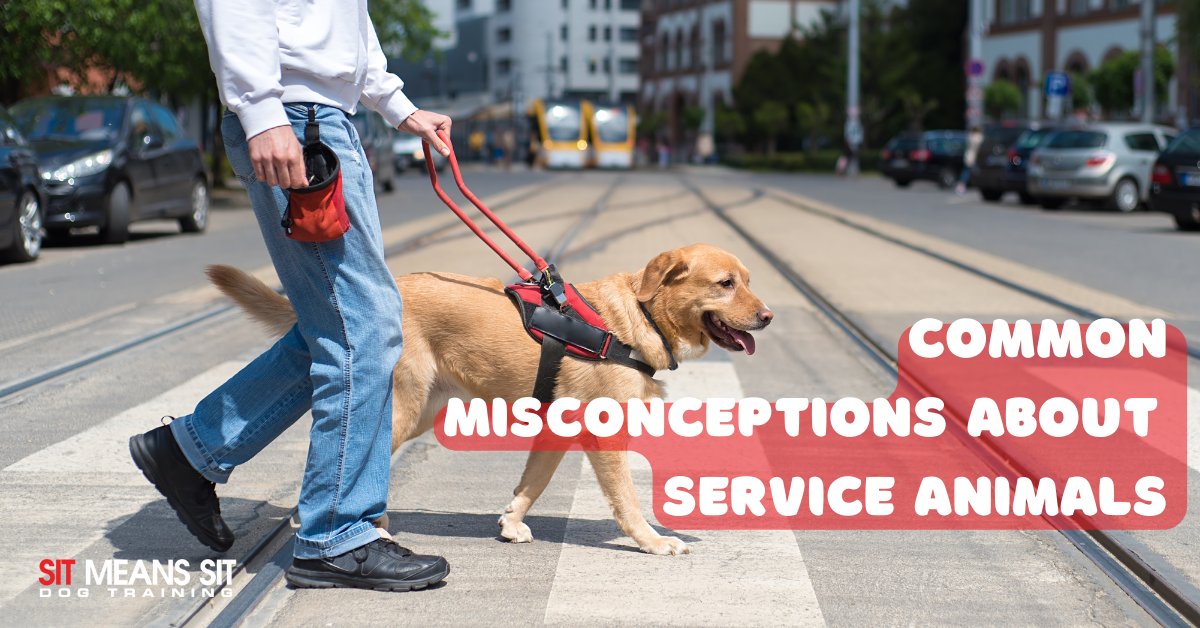Every person has presumptions about what a service animal should or shouldn’t do. People are less likely to know the truth unless they need a service animal themselves. Misinformation can be easy to spread, especially if it makes logical sense. We’re here to dispel some of the most common misconceptions about service animals.
Businesses are Required to Allow Your Service Animal, No Matter What.
False. Since businesses are private entities, they can bar your animal from entering as long as it’s under certain conditions. The Americans with Disabilities Act does require businesses to make prepare accommodations to include people with disabilities, including having a policy to allow service animals. However, if allowing a service animal fundamentally jeopardizes the safety of others or causes improper operation of public space, then a business is allowed to prohibit them from entering. For example, a restaurant can bar an animal from its business if it acts out of control and the owner does nothing to control it. That being said, a business can’t prohibit all service animals based on one experience; each animal has to be judged on an individual basis.
“Banned” Breeds Can’t Serve
False. According to the ADA, a service dog can be any breed no matter what, and they cannot be excluded from areas based on fear or past trauma. Again, every service animal has to be judged on an individual basis. You shouldn’t assume a Pitbull isn’t a real service animal just because it’s a Pitbull.
A Service Animal Must Be Uniformed
Nope! Service animals are not required to wear a vest or any other form of ID to let others know they’re on the job. Some owners prefer to uniform their dogs to let others know when they’re on the job, but it isn’t a mandated rule.
It’s Not a Real Service Animal without Certification
Untrue. Certification isn’t required for a Service animal. Getting registered doesn’t make your animal more “official” than another. However, getting certified can offer different benefits depending on the service you go through. Some registries offer reduced licensing fees, which is helpful since licensing your dog is the law.
It’s Not a Real Service Animal Without Training
An animal’s training depends on the owner and their disability, but it isn’t required by law to be “officially” trained. The ADA doesn’t have an “official” training program, as doing so costs money and can make having a service animal inaccessible.
Therapy Dog, Emotional Support Animal, and Service Animal Mean the Same Thing
Very Wrong. Each of these animals serves different purposes for their owners.
Service animals are specifically trained to perform a service based on their owner’s disability or needs. These services range from medicine reminders to low blood pressure detection and can be medical-based or psychiatric-based. It depends on the person.
Therapy dogs don’t perform any specific task. Instead, they’re trained to be on their best behavior in different institutions. If it helps, think of the dogs that visit patients at the local cancer research hospital.
Emotional support animals don’t perform specific tasks, either. Instead, they help their owner by just being present. This, in turn, causes an endorphin increase that can help alleviate the owner’s emotional disability. They support you emotionally.
People with disabilities aren’t limited to one of these. It all depends on their needs. A person may have a service animal to help detect their PTSD and an emotional support animal to help alleviate it.






